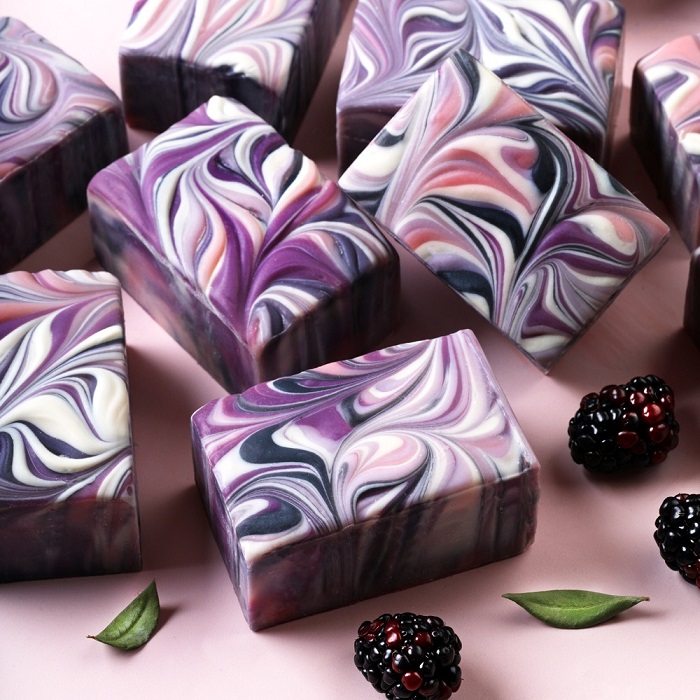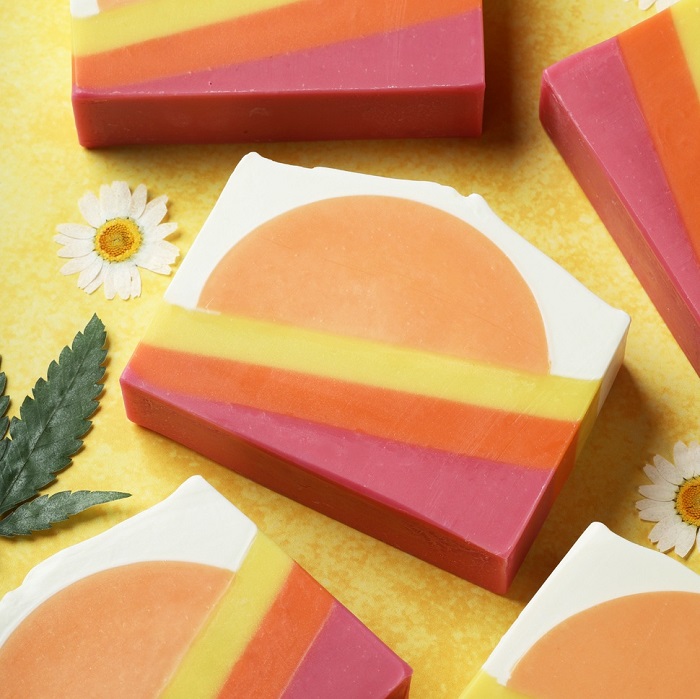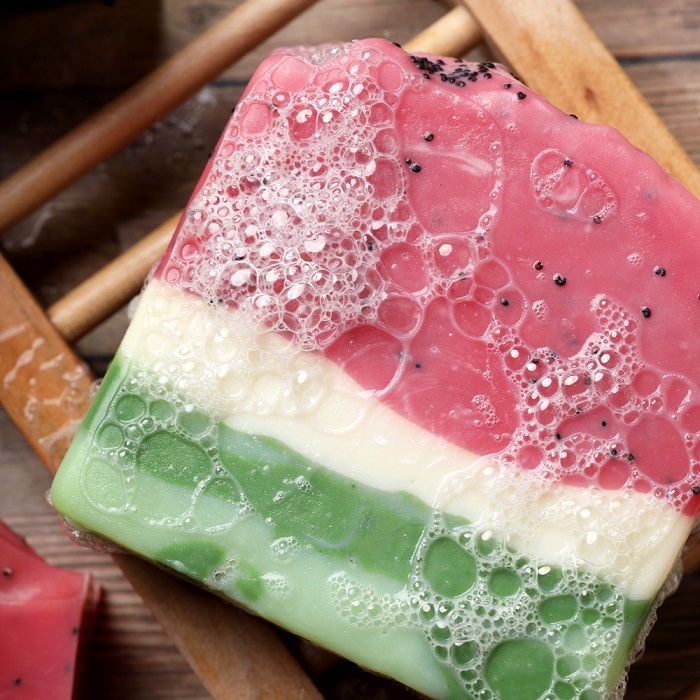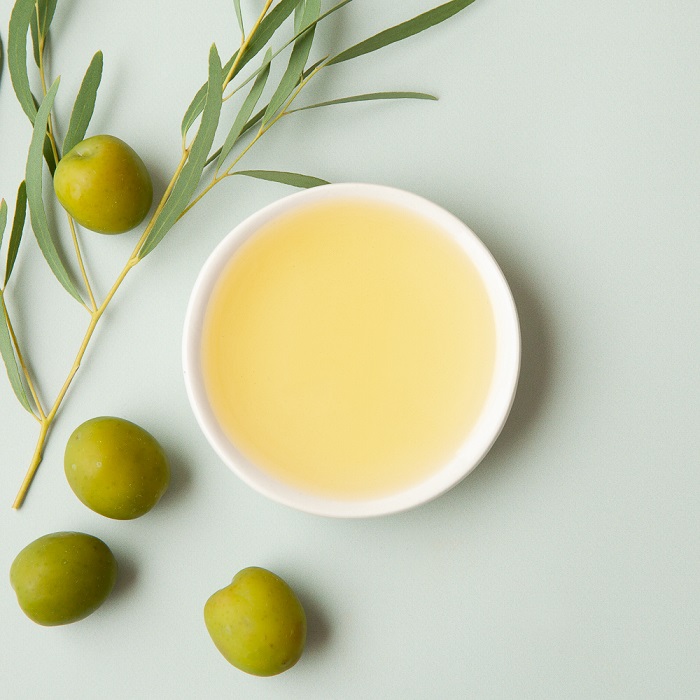Some people might remember castor oil from their grandparents’ medicine cabinet. These days, it’s used in personal care products, from cold process soap to hair conditioner. If you’re wondering what it is that makes castor oil such a popular addition to many products, don’t worry. We’ll tell you about castor oil’s many benefits and uses.

What is castor oil?
Castor oil is extracted from the seeds of the castor oil plant. The seeds are pressed to extract the oil within. It has a unique fatty acid profile, with 85-95% ricinoleic acid, 2-6% oleic acid and 1-5% linoleic acid. In addition to bath and beauty products, castor oil is used in food and as a coating and lubricant in various industries.
It acts as a humectant on the skin, just like glycerin. The humectant properties make it a wonderful addition to leave on products, such as balms. Castor oil has a shelf life of about 1 year.
Castor oil is known for being nutritionally dense; instead of being made up of only fatty acids, it also contains vitamins, protein, and antioxidants.
Castor oil has been used in traditional medicine and personal care for 4,000 years. Native to Ethiopia and other parts of east Africa, it was used as lamp oil in ancient egypt. Interestingly, while the castor bean can be fatal when chewed and swallowed, the toxic compounds aren’t present in castor oil because they’re not oil soluble. The poison stays in the mash left over after the oil is removed.

Castor oil in cold process soap making
Castor oil is a unique fixed oil. It has a thick, sticky texture and a slight odor. In cold process soap, it contributes to large bubbles and is known for its cleansing properties.
Castor oil is typically used around 2-5% of the total oil weight in cold process soap. Using more than 10% can lead to a slightly sticky bar. Even a small amount of castor oil (such as 1%) contributes to a stable and fluffy lather. Substituting castor oil for another oil in recipes is tricky; there is not another fixed oil that adds quite the same properties. If you don’t have any on hand, we recommend increasing the amount of coconut oil in your recipe to increase lather.
Castor oil does slightly accelerate trace, so keep that in mind when adding it to your recipes. If you’re looking for a few cold process recipes with castor oil, check out some of our soap projects.
Watermelon Cold Process Soap Project
Ray of Sunshine Soap Project
Oat Milk Soap Project
Bramble Swirl Soap Project
Castor oil in skin and body care products
Castor oil functions as a humectant, which means that it absorbs into the skin and holds moisture. Despite its high viscosity, castor oil is easily absorbed by skin. Some products use it to help deliver other ingredients to the skin, so it’s a great addition to oil based products like skin oil, and to emulsified products like moisturizers and creams.
Castor oil has unique cleansing properties. Because of this, it’s a great addition to oil cleansers. The idea behind oil cleansing is that it dissolves and washes away the sebum produced naturally by your skin, without leaving your skin completely stripped and exposed to the elements. This leaves skin balanced, and does not cause skin to overproduce sebum.
Castor oil is also not very comedogenic, which means that it doesn’t tend to clog pores. That makes it suitable for use in moisturizers and other products for acne-prone skin.

Castor oil in DIY hair care products
Castor oil’s hydrating benefits also extend to your hair. It absorbs into the hair shaft where it helps keep your strands hydrated. Hydrated hair is not just prettier, it’s also less prone to tangling and breakage.
Castor oil is also great for moisturizing your scalp. Your scalp is skin, after all. A healthier scalp produces stronger, healthier hair, so it’s a double whammy.
The fact that castor oil is so easily absorbed helps to deliver other ingredients to your scalp and hair. It also adds shine to dull locks, so it makes your hair healthier and more beautiful.
You’ll find castor oil in lots of hair care products. There’s a reason that it’s featured in our Olea Hair Oil Base. It also works well in leave-in conditioners and hair masks.

Castor oil in other DIY personal care products
In lip products, castor oil still nourishes and moisturizes, keeping some of your most delicate skin protected and looking great. Because it also adds shine and gloss, you’ll find it in lip gloss and lipstick as well.
Its lather boosting properties aren’t just useful in soap; castor oil is commonly used in foaming bath truffles to contribute to fluffy bubbles. They make a lovely bubbly bath that’s also great for your skin.
Castor oil is also beneficial for your fingernails and toenails. Adding some to a warm water soak for feet and hands can make your nails healthier, smoother, and softer. You’ll need to add a light emulsifier to get the oil to mix with the water.
You can see that castor oil is a beneficial oil in personal care, and is also very versatile. It can be used to make dozens of different products to help keep your skin, hair, and nails beautiful and healthy. We hope that you give this unsung hero of the fixed oil world a try and see what a difference it can make.

